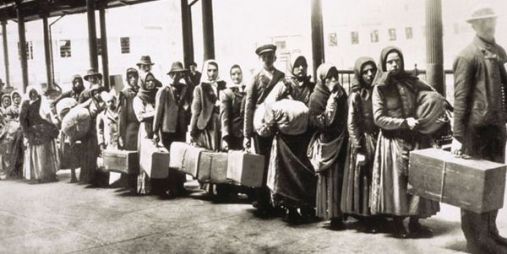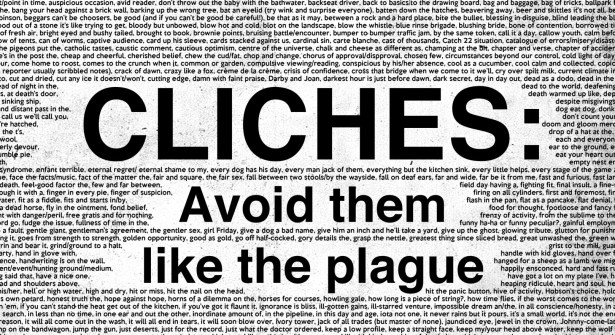
Immigration. wnd.com image
By Casey Bukro
Ethics AdviceLine for Journalists
The covid-19 pandemic is spurring a migration, one of many in human history, from crowded big cities where death tolls are rising to smaller cities, suburbs and rural areas thought to be safer from the scourge.
Humans are a restless species even in the best of times, spreading across nations or the globe, sometimes prodded voluntarily or un-voluntarily by war, famine, disease, conquest, wanderlust, living conditions, religious freedom and prejudice.
Today the fear of a plague is the driving force.
“A record 27% of home searchers looked to move to another metro area in April and May 2020, a new high in the share of Redfin.com users searching for homes outside their area,” reported Redfin, a residential real estate company. It’s up from 25.2% in the second quarter of 2019 and 26.0% in the first quarter of this year.
The immigration analysis is based on a sample of more than one million Redfin.com users searching for homes across 87 metro areas in April and May. Overall, searches for homes in small towns surged. Pageviews of homes in towns with fewer than 50,000 residents were up 87% from a year ago, more than triple the 22% increase in pageviews of homes in cities with more than a million residents.
They want to leave the Bay Area, Washington, D.C. and Seattle for places like Sacramento, Las Vegas and Nashville.
“While there has been a huge increase in the number of people looking online at homes in small towns, the long-term impact of the pandemic on people actually moving from one part of the country to another remains to be seen,” said Redfin economist Taylor Marr. Most of them probably were already considering a lifestyle change. “The pandemic and the work-from-home opportunities that come with it is accelerating migration patterns that were already in place toward relatively affordable parts of the country. But for many people, the lure of large homes in wide open spaces will be a passing dream fueled by coronavirus-induced isolation.”
Past immigrations
Judging from past immigrations, isolation hardly seemed like a goal. And pandemics have a way of upending and diverting plans. Moving might not be that easy.
New York, New Jersey and Connecticut enacted 14-day traveler quarantines, trying to check the spread of the coronavirus. Governors hope to preserve their hard-won recoveries by making travelers from more than half-dozen virus hot-spot states isolate themselves.
The United States leads the world in coronavirus cases and deaths. While the U.S. wrestles with easing restrictions safely, the European Union declared that Americans will not be allowed to travel to the block of 27 countries when it reopens to some foreign travel. Nearly 10.3 million coronavirus cases have been detected worldwide, with roughly 2.6 million infections reported in the United States. At least 124,000 people have died of the disease in the U.S., and the global death count is near 505,000.
It’s too early to tell how this plays out nationally and globally on immigration, a story of movement by people from one place to another, particularly different countries, with intentions of settling temporarily or permanently in a new location.
Early human migration includes people migrating to regions where there were no humans. Colonialism involves expansion of populations into sparsely settled territories or territories with no permanent settlements. In modern times, humans migrated within and between nations, legally or illegally. It can be voluntary or unvoluntary, such as deportation, slave trade, trafficking in human beings and flight from wars or ethnic cleansing.
The history of immigration to the United States starts with the first European settlements around 1600. In 1607, the first successful English colony settled in Jamestown, Virginia. In 1619, Africans were imported as slaves. So began the first and longest era of immigration, lasting until the American Revolution in 1775. It brought Northern European immigrants, mainly from Britain, Germany and the Netherlands. The British were the largest group of arrivals. Ninety percent of these early immigrants became farmers.
Later in history
Looking later in history, the University of Washington’s “America’s Great Migrations Project,” derived in large part from the work of James Gregory, professor of history. Recognizing that “Americans have always been a moving people, coming from other places, moving to new places,” the project focused on four historic migrations:
The Great Migration – Upwards of seven million African Americans left the South between 1916 to 1970 to settle mostly in the big cities of the North, Midwest and the West. They transformed cities and set the foundations for reconstruction of race, politics and even regional balances of the U.S.
Driven from their homes by unsatisfactory economic opportunities, they took advantage of the need for industrial workers during the First World War. To the dismay of white Southerners, black newspapers, particularly the widely read Chicago Defender, published advertisements touting the opportunities available in Northern and Western cities, along with first-person accounts of success.
By the end of 1919, some one million blacks had left the South, traveling by train, boat or bus. Some had autos and even horse-drawn carts. In the decade between 1910 and 1920, the black population of major Northern cities grew fast, including 66% in New York, 148% in Chicago, 500% in Philadelphia and 611% in Detroit.
Many new arrivals found jobs in factories, slaughterhouses and foundries, where working conditions were hard and sometimes dangerous. Female migrants had a harder time finding work. Aside from competition for employment, there was competition for living space in the crowded cities. Though segregation was not legal in the North, as it was in the South, racism and prejudice were widespread.
During the Great Migration, African Americans began building a new place for themselves in public life. They confronted racial prejudice as well as economic, political and social challenges to create a black urban culture with enormous influence in decades to come.
Latinx migration
Latinx American Great Migrations – Spanish-speaking people were living in what is now the United States decades before English-speaking people crossed the Atlantic seeking colonies. Centuries later, the United States annexed Florida, Louisiana and the northern half of Mexico. More than 100,000 Spanish-speaking residents became U.S. citizens.
Though the University of Washington project calls this a migration, it seems more like a population capture.
The 1850 U.S. census counted more than 80,000 former Mexicans, 2,000 Cuban and Puerto Ricans and 20,000 people from Central and South America. Today the descendants of those 1850 citizens are part of an Latinx American population that grew enormously. As of 2017, more than 58 million Americans claimed Latin American heritage.
Conventional wisdom says Latin American migrants continue coming to the U.S. seeking a better life and the “American Dream,” writes Roque Planas in huffingtonpost.com. That’s true, but there’s another part of the story, he writes. “People leave Latin America because life there can be very hard. Poverty, political instability and recurring financial crises often conspire to make Latin American life more challenging than in the U.S., a wealthy country with lots of job opportunities.”
Southern Diaspora – More than 20 million whites left the South during the 20th century, vastly outnumbering the 7-8 million African Americans who left, according to the University of Washington project. They were joined by nearly one million Latinx who moved west to California and into the Midwest.
Dust Bowl
Dust Bowl Migration – Close to 400,000 people fled Oklahoma, Texas, Arkansas and Missouri during a period of severe dust storms that struck during the Great Depression. Known as the Dust Bowl migration, it was the most publicized mass migration of that decade.
The drought came in three waves, 1934, 1936 and 1939-40. But some regions of the High Plains had draught conditions for up to eight years. Though early explorers called the region the Great American Desert, the federal government encouraged settlement and development of the plains for agriculture with the Homestead Act of 1862, offering settlers 160-acre plots. With the end of the Civil War in 1865 and the completion of the First Transcontinental Railroad in 1869, waves of migrants and immigrants reached the Great Plains.
Without understanding the ecology of the plains, farmers deep-plowed the virgin topsoil, displacing the native, deep-rooted grasses that normally trapped soil and moisture even during droughts and high winds. During the droughts of the 1930s, soil deprived of the anchoring grass roots turned to choking clouds of dust that blackened the sky.
The Dust Bowl forced tends of thousands of poverty-stricken families to abandon their farms, unable to pay mortgages or grow crops. Losses reached $25 million a day by 1936.
Native Americans
Native American Forced Relocations – Although this migration does not appear in the University of Washington’s migration project, it deserves recognition as the kind where people are moved unwillingly.
At the beginning of the 1830s, nearly 125,000 Native Americans lived on millions of acres of land in Georgia, Tennessee, Alabama, North Carolina and Florida — lands their ancestors occupied and cultivated for generations. By the end of the decade, few natives remained anywhere in the southeastern United States. Working on behalf of white settlers who wanted to grow cotton on Indian land, the federal government forced Native Americans to leave their homelands and walk hundreds of miles to designated “Indian Territory” across the Mississippi River.
Relocated people suffered from exposure, disease and starvation on their way to reservations, killing thousands. The term “Trail of Tears” springs from a description of the forced removal of Native American tribes, including the Cherokee Nation relocation in 1838. Cherokees were the last forced removal east of the Mississippi, resulting in an estimated 2,000 to 8,000 deaths among the 16,543 relocated. By some estimates, about 60,000 Native Americans were forced from their homelands.
The Indian Removal Act in 1830, forced all eastern tribes to move to southwestern reservations, to land considered useless. Twenty-six tribes were removed or assigned reservations in the new territory between 1830 and 1862. The end of the Civil War allowed another surge of Anglo-American settlement in the West, forcing 28 tribes to move to Indian Territory between 1867 and 1892.
Andrew Jackson long advocated what he called “Indian removal.” As an army general, he led brutal campaigns against the Creeks in Georgia and Alabama and the Seminoles in Florida. As president, he signed the Indian Removal Act in 1830. Indian removal was Jackson’s top legislative priority upon taking office. The Choctaw became the first nation expelled from their land. The Choctaw, Chickasaw, Seminole, Creek and Cherokee were known as the “Five Civilized Tribes” for learning to speak and write English and following European-style customs such as land and property ownership.
Lincoln no friend
Though Abraham Lincoln is known as “The Great Emancipator,” he was no friend to Native Americans. Beginning in 1863, the Lincoln administration oversaw the removal of 10,000 Navajos and Mescalero Apaches, forcing them to walk 450 miles to the Bosque Redondo reservation in New Mexico and held as military prisoners. More than 2,000 died.
Rampant corruption in the Indian Office, later known as the Bureau of Indian Affairs, continued throughout Lincoln’s term and beyond. In many cases, government-appointed Indian agents stole resources that were supposed to go to the tribes.
Several massacres of Indians happened during Lincoln’s watch. The Dakota War in Minnesota in 1862 led to the hanging of 38 Indian men. Although 303 Indian men were sentenced to hang, Lincoln pardoned the rest. The Sand Creek Massacre in southeastern Colorado in 1864 led to the deaths of hundreds of Cheyenne and Arapaho.
An historian said Lincoln made no revolutionary change in relations with Native Americans as he did for African Americans with the Emancipation Proclamation. Though Lincoln called for reforming the Indian system in his last two annual messages to Congress, he gave no specifics and continued the policy of confining Indians to reservations as wards of the government after negotiating treaties.
Migrations often are seen as paths to a better life. In the age of the coronavirus, we are still trying to figure out what that might look like. Judging from the past, acts of kindness toward others would help. Social distancing and wearing face coverings might become icons of our generation, as well as our salvation, on our covid-19 migration to an unknown destination.
********************************************
The Ethics AdviceLine for Journalists was founded in 2001 by the Chicago Headline Club (Chicago professional chapter of the Society of Professional Journalists) and Loyola University Chicago Center for Ethics and Social Justice. It partnered with the Medill School of Journalism at Northwestern University in 2013. It is a free service.
Professional journalists are invited to contact the Ethics AdviceLine for Journalists for guidance on ethics. Call 866-DILEMMA or ethicsadvicelineforjournalists.org.









